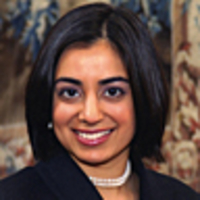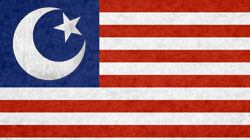Plus: Check out Book Beast, for more news on hot titles, authors and excerpts from the latest books.

I grew up in a rural, mini-metropolis about 100 miles south of Denver: Pueblo, Colorado. Our house was Mediterranean-style stucco with a red-tile roof. We were the sole Muslim and Pakistani family for years and, even with a few additions, the Muslim and Pakistani population was never high. Pueblo is the gateway to the southern Colorado community and the Southwest. It had a large Latino and Chicano population, of which I became an honorary member because of my dark hair, eyes, and complexion. Native Spanish speakers would solicit me in conversation.
“ Como está?” an older Latino man would say to my sister and me while we waited for my mom to pay for her groceries.
ADVERTISEMENT
“Your ancestors were the Moors,” my mom said, “who conquered Spain.” “But Mom, I thought we were Mongolian,” I whined, confused.
“Oh, we don’t speak Spanish,” my sister would say authoritatively, taking her role as the older sister very seriously.
“Bah, you kids don’t care about your culture no more,” the man would gruff and then stomp out of the store. Spanish speakers would become very irate when we wouldn’t respond “ en español.” But, as we would later tell Mom at home, we weren’t Latino.
“Yes, you are!” My mother replied.
“Mom, how can we be?” my sister asserted the way that an eleven-year-old girl does with her mother.
“Your ancestors were the Moors,” my mom said, “who conquered Spain.”
“But Mom, I thought we were Mongolian,” I whined, confused.
“Your mother claims to be related to everyone!” my father’s phantom voice piped in from the background.
***
You must come to the Eid prayers with us,” said Zainab Auntie to me over the phone the night we arrived in Chicago. Zainab is not actually my aunt; she is the wife of an old family friend, but in South Asian culture, one generally calls family friends who are the same ages as one’s parents “aunt” and “uncle.” Zainab’s husband and my father had done their medical residencies in Chicago when they both had first moved to America from Pakistan and India respectively. While her husband had stayed on in Chicago to practice radiology, my father had moved his family to Pueblo.
My mom, dad, sister, brother, and I met in Chicago for a reunion of sorts to coincide with Eid al-Udha, a Muslim holiday that commemorates Abraham’s near-sacrifice of Ishmael, exemplifying Abraham’s devotion to the one God. We arranged to meet my auntie and uncle the next morning.
On the first morning of the three-day holiday, my family walked over to McCormick Place, a convention center, where Eid prayers were being held. The huge turnout at every mosque each year finally spurred the community to rent two gigantic halls in the downtown convention center. Finding a spot in the women’s section, my mother and I sat down and waited for the service to begin.
We were early (for once) and had the hall mostly to ourselves. Long strips of thin, white paper, about four feet wide, were spread in diagonal lines all over the hall. The stone floor was cold and hard to the touch. The strips of paper were being used in place of prayer rugs. If everyone who came to the prayer brought a rug, the hall would be filled in minutes with small Persian carpets, probably mostly with pictures of the Kaaba in Mecca on them. The paper saved space and would be easy to clean up. It sat neat and, amazingly, clean.
As the time for the prayers came closer, the hall swelled with activity. Massive numbers of people streamed in. For any other occasion and perhaps with a non-Muslim crowd, the prayer paper would have been a rumpled mess before the start of the ceremony, but by the time I noticed the groups of beautiful and statuesque African-American women who came to pray, the paper was still intact, just waiting for some Muslims to pray on it. The women had on long dresses made of orange, black, and green African Kente cloths with matching headdresses. I had never seen such voluptuous and colorfully dressed women before in my life.
My mom and I smiled at each other, both of us clearly surprised at how our normally festive shalwar-kameezes—our Pakistani ethnic outfits, which consisted of colorful, harem-type pants and a long tunic—were being upstaged! We also saw more South Asians and other Asian races. But nothing quite struck me as much as the African-American women, who I can still clearly see today, walking through my memories like they have found a home there.
My grandmother—the one who chose the name “Asma” for me—had gone on the hajj pilgrimage for the first time in 1970. There, she too was awed by the African female delegation, just as I would be years later.
Excerpted from Red, Muslim and America by Asma Gull Hasan. © 2009 by Asma Gull Hasan. With permission from the publisher, HarperOne, an imprint of HarperCollinsPublishers.
Asma Gull Hasan was born in Chicago to Pakistani immigrant parents and grew up in Colorado. Asma is a Glamour magazine blogger, a contributor to the New York Times, the San Francisco Chronicle, and Denver Post, and author of the acclaimed books American Muslims and Why I Am a Muslim.


